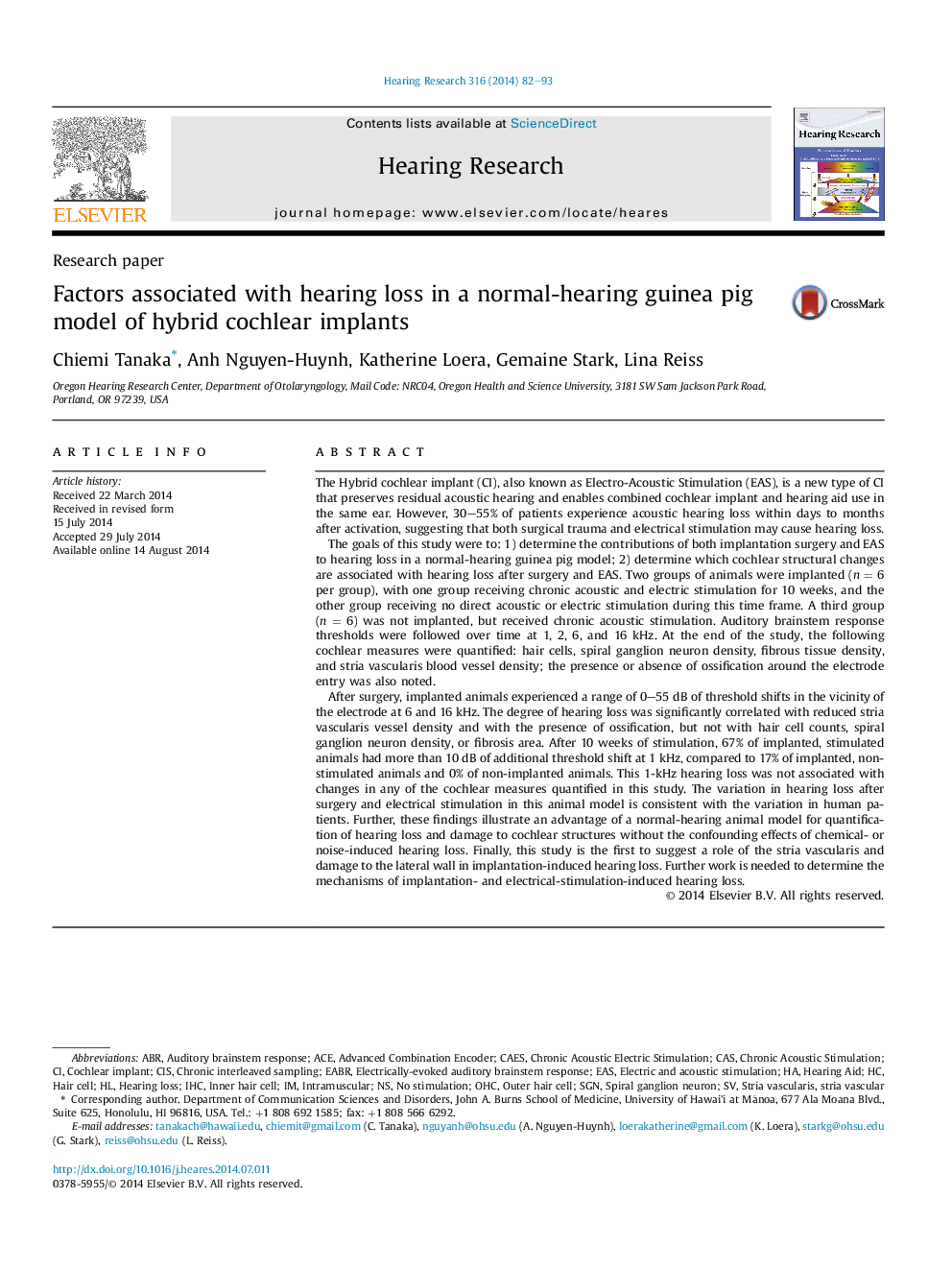| Article ID | Journal | Published Year | Pages | File Type |
|---|---|---|---|---|
| 6287422 | Hearing Research | 2014 | 12 Pages |
Abstract
After surgery, implanted animals experienced a range of 0-55Â dB of threshold shifts in the vicinity of the electrode at 6 and 16Â kHz. The degree of hearing loss was significantly correlated with reduced stria vascularis vessel density and with the presence of ossification, but not with hair cell counts, spiral ganglion neuron density, or fibrosis area. After 10 weeks of stimulation, 67% of implanted, stimulated animals had more than 10Â dB of additional threshold shift at 1Â kHz, compared to 17% of implanted, non-stimulated animals and 0% of non-implanted animals. This 1-kHz hearing loss was not associated with changes in any of the cochlear measures quantified in this study. The variation in hearing loss after surgery and electrical stimulation in this animal model is consistent with the variation in human patients. Further, these findings illustrate an advantage of a normal-hearing animal model for quantification of hearing loss and damage to cochlear structures without the confounding effects of chemical- or noise-induced hearing loss. Finally, this study is the first to suggest a role of the stria vascularis and damage to the lateral wall in implantation-induced hearing loss. Further work is needed to determine the mechanisms of implantation- and electrical-stimulation-induced hearing loss.
Keywords
Related Topics
Life Sciences
Neuroscience
Sensory Systems
Authors
Chiemi Tanaka, Anh Nguyen-Huynh, Katherine Loera, Gemaine Stark, Lina Reiss,
